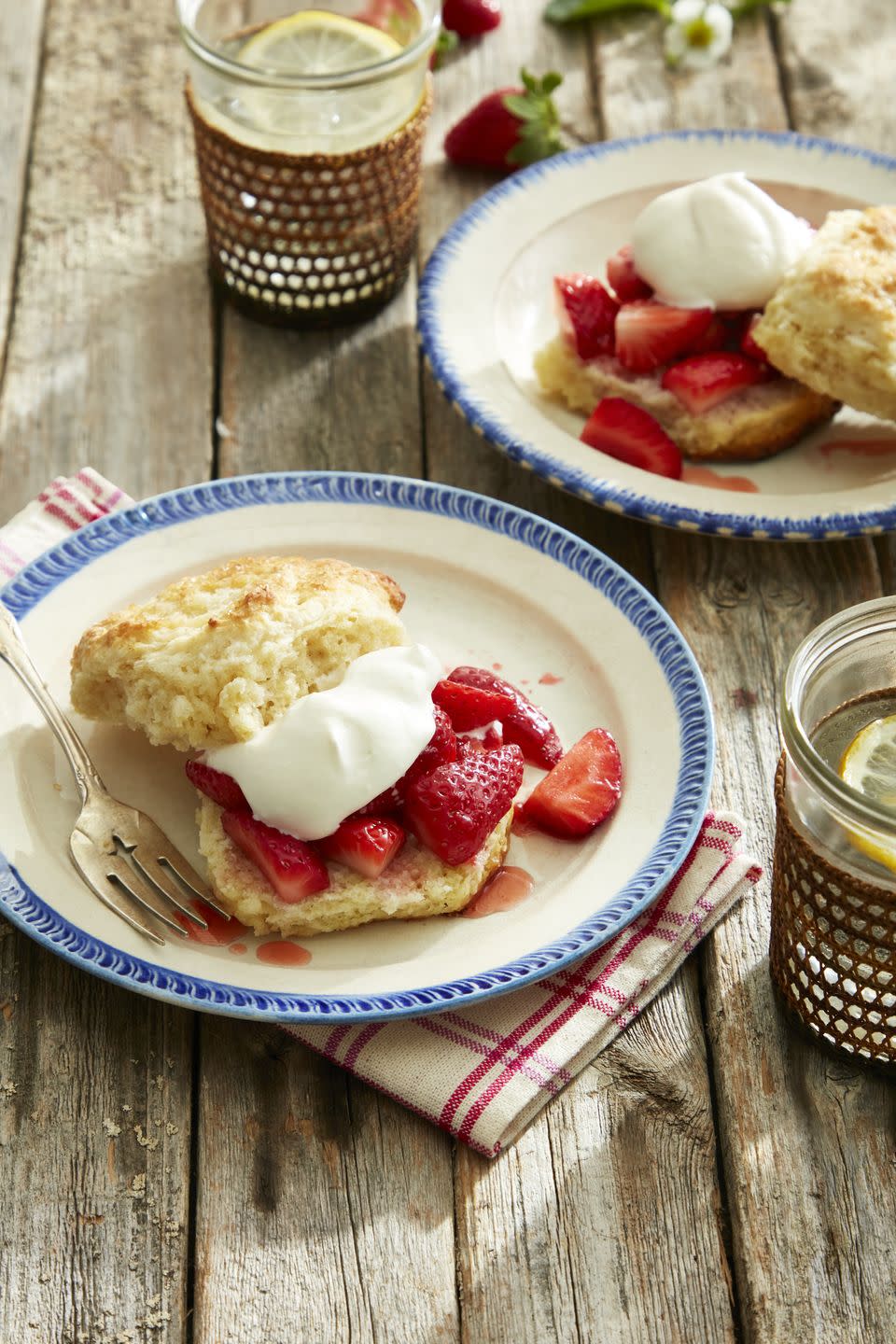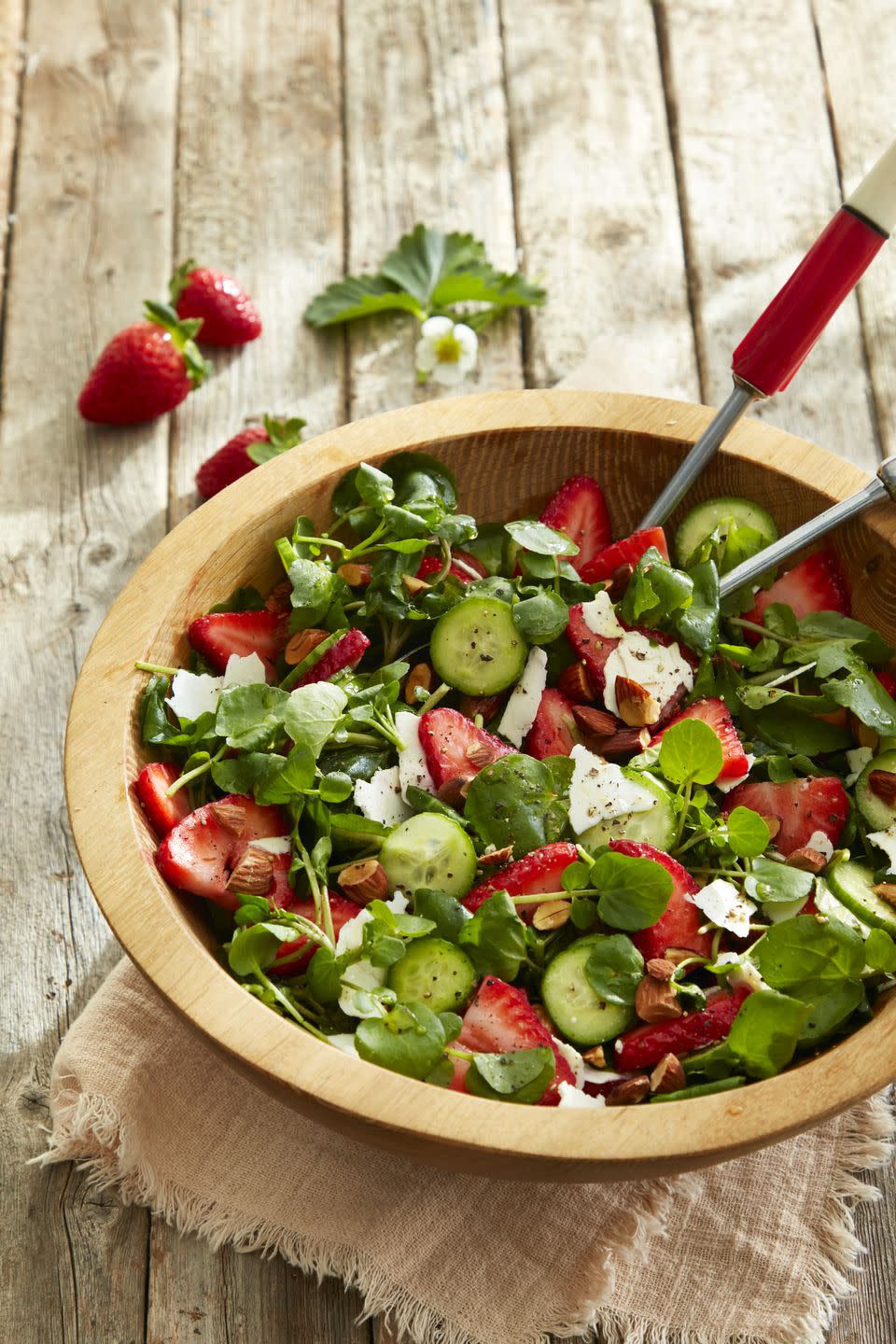How to Wash and Store Strawberries for Ultimate Freshness
Whether you’ve bought strawberries from your local grocery store, your favorite farmers' market or you picked ones you grew yourself from your garden, you will want to wash these vibrant gems before you can truly enjoy them.
There’s nothing worse than having to dump a tray of berries that are suddenly soft and fuzzy. We’ve all gone to the fridge to pop a juicy berry into our mouths as a healthy snack or slice some up for a sweet treat—only to realize they’ve sprouted tuffs. So disappointing! Fresh produce can be sensitive and delicate that way, but with a little extra love and care, you'll be able to have your strawberries and eat them, too.
So how do you clean strawberries to make them last longer? Here are a few tips to help your berries stay fresh and flavorful for up to two weeks.

Looking to use up your berries? Check out these Juicy Strawberry Recipes to Make All Summer Long.
Method 1: Wait — Then Wash Strawberries in Water
One classic method of keeping strawberries is to store them dry in the fridge, and then wash in water just before using. The reason for this is that, while washing berries cleans away any bacteria and mold spores, excess moisture, can cause bacteria or mold to grow, and the berries to spoil more quickly. Store them in a perforated container, where air can circulate, or with a paper towel to absorb extra moisture.
Then, when you're ready to eat your strawberries, simply run them under cold tap water. If you have freshly picked or firm, good-looking berries, this will knock any minor bits of dirt or grit off the berry. Pat them dry, or let them thoroughly air dry, and then eat, or cook as desired!
Method 2: Clean Strawberries with a Vinegar Soak
If you're worried about bacteria and mold or are hoping to make your berries last a little longer, you can soak them in a mild white vinegar solution. The benefit, according to the Detroit Free Press, is that the acid in the vinegar will help kill any bacteria and mold spores that might be on the berries, though you'll want to rinse them again in water to cut down on giving your fruit a vinegary taste.
To make this solution, combine 1 part vinegar to 3 parts water in a large container or bowl. Place the strawberries in the vinegar-water and let them soak for about five minutes. Then rinse them thoroughly in a colander and place on a towel to dry. Once the berries are thoroughly dried, you can store them berries in the fridge, in a container that allows air to circulate, for up to two weeks.
Learn more: 16 Fun Facts All Strawberry Lovers Should Know
Method 3: Wash Strawberries in Hot Water
Similar to the vinegar method above, the idea behind this is to destroy any bacteria or mold on the surface of the strawberries, without affecting the berries themselves. This method comes from food scientist Harold McGee, who notes that berries typically endure plenty of hot temperatures in a field, while growing.
To do this, you'll want to have an accurate thermometer. Heat water to about 125°F, and soak your berries in the water for just about 30 seconds. This will kill any bacteria without damaging or cooking the berries. Then allow them to dry thoroughly on a towel, and store as directed above. They should keep for up to two weeks.

Method 4: Wash Strawberries with Baking Soda
If you find yourself with some fresh and delicious strawberries and without vinegar or an accurate thermometer in the house, there is one final method. Instead soaking the berries in something acidic you can use baking soda to soak them in something basic. This will also change the pH balance enough to kill off any bacteria or mold.
This method, which helpfully comes from baking soda maker Arm & Hammer, works like this: add 1 teaspoon baking soda to ever 2 cups of cold water, and stir to combine. Soak berries in the solution for up to 15 minutes. Remove, and again let dry throughly. For this method, it's recommended you eat the strawberries immediately after washing.
Want to wash something besides strawberries? Here's How to Properly Wash Any Kind of Fruit and Vegetable.
Final Tips: Dryness is Key!
As mentioned, moisture is enemy number one, so however you wash them, strawberries need to be completely dry before you store them. Pat them dry with paper towels, making sure to absorb as much water as possible, then let them dry completely on fresh paper towels.
After they’ve been cleaned and dried, you’ll want to store them in an air-tight container lined with paper towels. This will help soak up any additional moisture. If washed and stored properly, strawberries should last about two weeks in the refrigerator.
Remember: if you do spot a strawberry starting to mold, make sure to remove it so it doesn’t spread to the rest.
If you haven't taken advantage of strawberry season yet, you officially have nothing else stopping you! Need ideas for what to make? We recommend putting fresh strawberries in a Watercress and Strawberry Salad, cooking ripe strawberries into a Brandied Strawberry Shortcakes with Malted Whipped Cream, or if you've got some use-em-before-you-lose-em strawberries, mix them up into a Strawberry-Cabernet Barbecue Sauce, and put them on grilled chicken!
You Might Also Like

